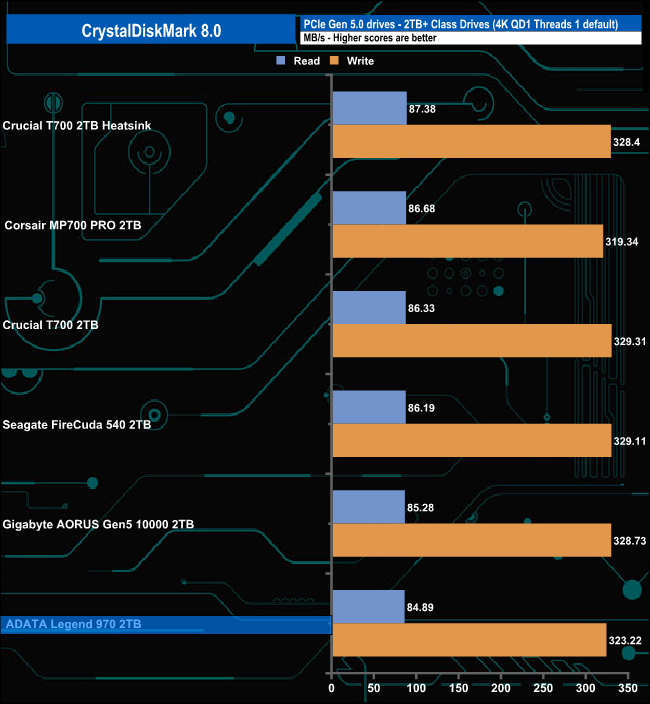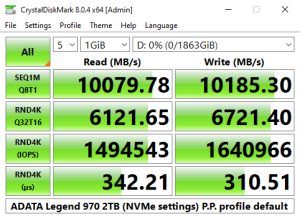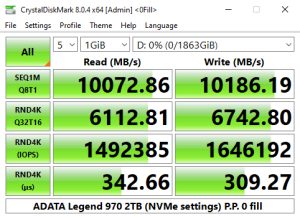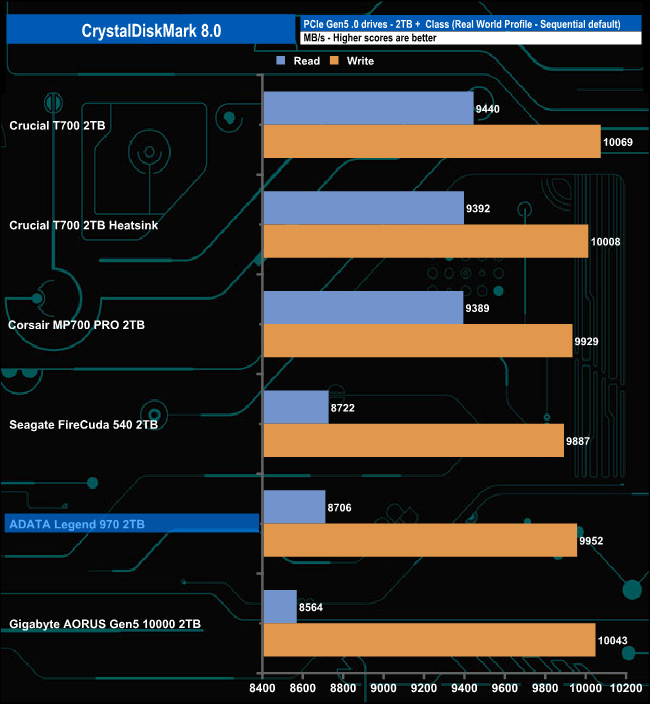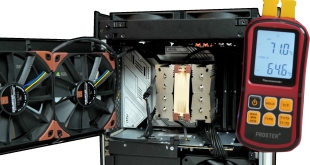CrystalDiskMark is a useful benchmark to measure the theoretical performance levels of hard drives and SSDs. We are using v8.0.
In CrystalDiskMark 8's 4K QD1 T1 test, the ADATA Legend 970 2TB sits at the bottom of the table with a read result of 84.39MB/s backed up with a write score of 323.22MB/s. Although the drive sits at the bottom of the Gen 5 drives we've tested to date, in reality, we are only talking 2.49MB/s difference in read performance between the Legend 970 and the Crucial T700 drive that tops the table.
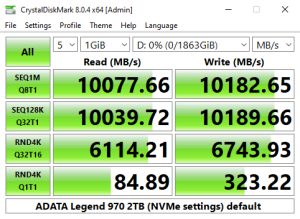
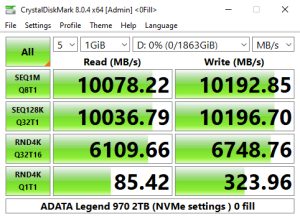
As you can see from the benchmark result screens we can confirm the official Sequential read/write figures for the 2TB Legend 970 of up to 10,000MB/s with read/write test results of 10,077MB/s and 10,182MB/s respectively.
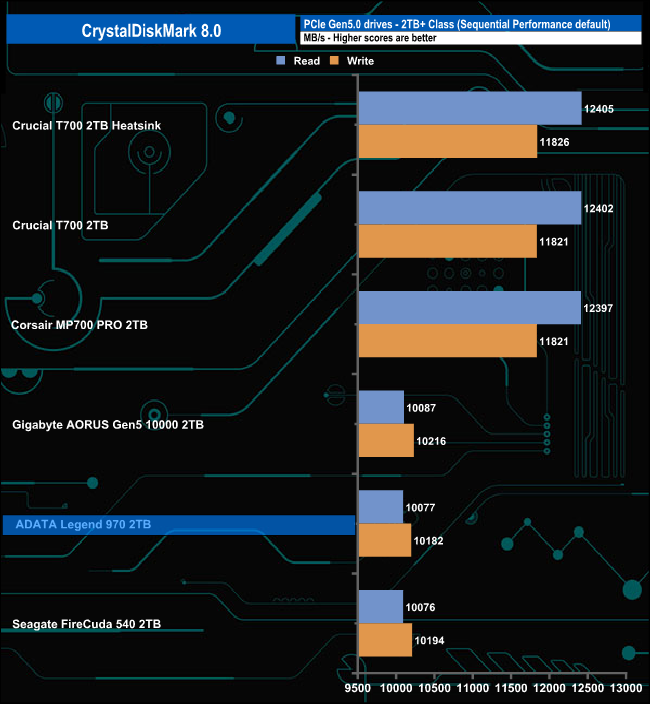
That Sequential read score sees the drive sitting between the Gigabyte AORUS Gen 5 10000 and the Seagate FireCuda 540. Its write score, however, is the slowest of the three drives running the Phison E26 controller bus at around 1600MT/s rather than the nearer 2000MT/s of the three fastest drives.
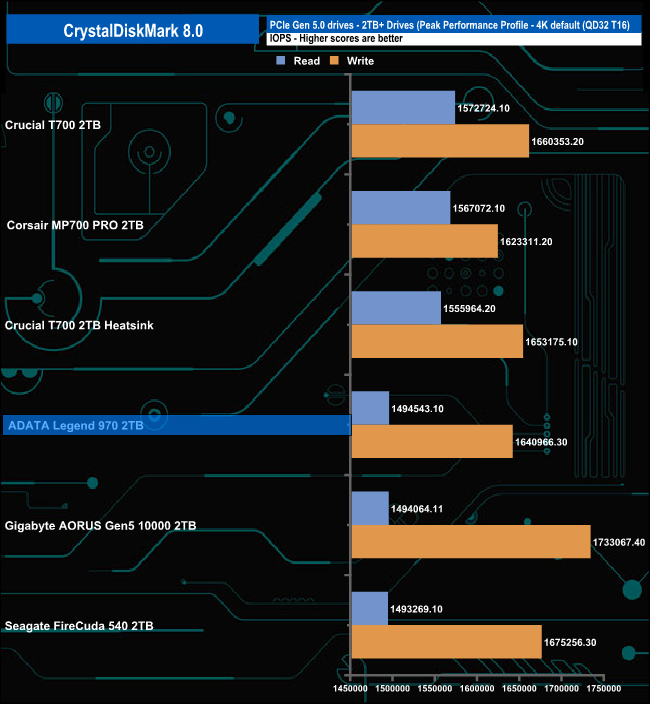
Using the Peak Performance profile of the CrystalDiskMark benchmark we could confirm the official 4K random read/write figures for the drive of up to 1,400,000 IOPS and even bettered them especially when it came to random writes. The best test result we saw for random reads was 1,494,543 IOPS while the best write figure was 1,640,966 IOPS, some 240,966 IOPS faster than the official maximum.
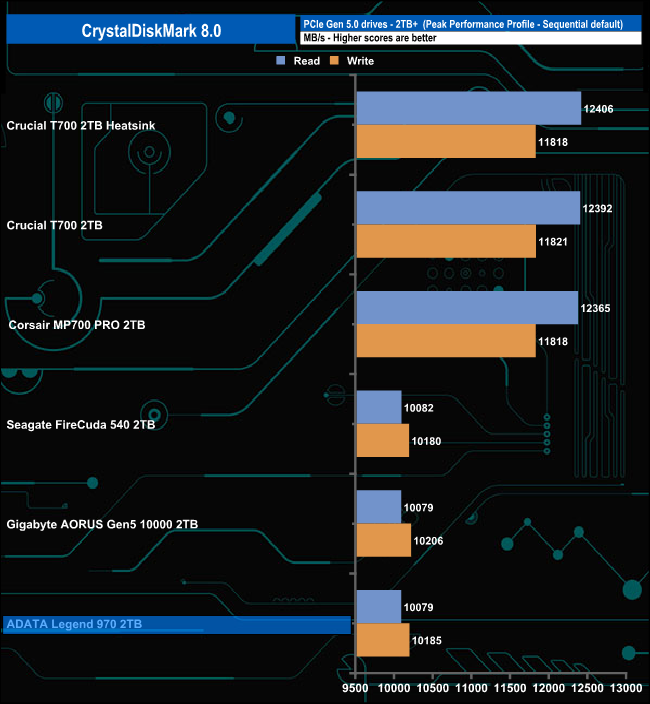
With the Peak Performance profile could once again confirm the official Sequential performance figures with the drive sitting in last place on the chart.
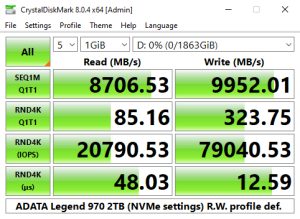
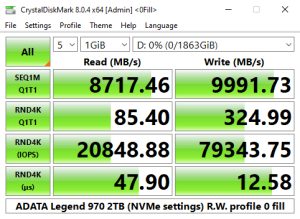
ADATA's Legend 970 sits between the Seagate Firecuda 540 and the Gigabyte AORUS Gen 5 10000 in the Real World Profile performance chart. It has a faster read score than the Gigabyte drive but its write performance is slower than both it and the Seagate drive.
 KitGuru KitGuru.net – Tech News | Hardware News | Hardware Reviews | IOS | Mobile | Gaming | Graphics Cards
KitGuru KitGuru.net – Tech News | Hardware News | Hardware Reviews | IOS | Mobile | Gaming | Graphics Cards


